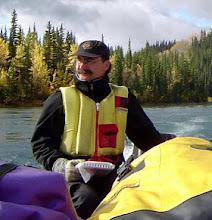 |
| City Gaps, empty spaces where buildings have disappeared, have been taken over by a variety of temporary shops and services. |
Christchurch is a fallen city. There are large numbers of unlivable houses, the downtown core remains a closed zone and city water supply and sewage systems are fragile and running at a limited capacity. Repairs and new projects are proceeding but these are complicated by the need to first remove dangerous ruins, deferred engineering evaluations and the increasingly complicated waters of insurance settlements. The level of uncertainty about the future raises concerns of disorder. After almost a year of waiting however, people mostly remain calm and carry on.
 |
| The Canterbury museum has mounted a display of the spontaneous collection of “hearts” of support sent to the city from around the world. These signs of caring are comfort for a damaged city. |
 |
| Sam Johnson, a student at Canterbury University, organized the Student Volunteer Army, to help clean up after the quakes. |
For many in Christchurch it has been a hard year. People speak of losing a year of work, but the time has been well filled. One University of Canterbury professor I spoke with acknowledged that her research had been set back as she spent more time supporting and mentoring her graduate students. Stephen was astonished when he returned to his school after the quake to find a bunch of his students with shovels and wheelbarrows beginning the clean-up. The
Student Volunteer Army (SVA), a web-based crowd sourcing organization
, grew out of this spirit and has been an important element in both the clean-up and the construction of new community relationships. Despite the challenges of addressing their dislocation and material loss, the people of the city are addressing their uncertain future through the strengthening and expansion of social networks.

Erin and Stephen have responded to this vibrance. They've purchased a house, acquired chickens, planted vegetables, taken in cats and strengthened their commitment to their home place because of the relationships to place they've found themselves in.
Lyttleton, Christchurch's port, was also heavily damaged in the quakes. The town, built on the steeply sloped interior of an ancient volcano, suffered from both the quake and the subsequent fall of rock from above. Nevertheless people have worked together to mend their community.
 |
| A town planner in Lyttleton who cheerfully continues her work in making the Christchurch region a more liveable space. Geological devestation is simply another issue highlighting needs and a new frame for making a better community. |
 |
| The Lyttleton weekend market, Anna Moorehead of Gruff Junction sells her local goat cheese “from teat to table”. Others offer fish caught this morning, fresh baking, chocolate delights and heaps of just harvested vegetables and fruit. The market is back. Though some stalls are still to return, spirits are high. |
In Lyttleton I get to experience a
GapFiller. Like the SVA, another group of earthquake “activists”, the gap fillers, moved to take back their city. Making arrangements with owners of lots cleared of wrecked buildings - gaps - they have organized a series of events including a historic photo exhibit of bombed European cities (now rebuilt and vibrant) and a community activity site (where Erin and Stephen set up the “Hammer Time” stall where kids could bang nails and be builders). In Lyttleton they met with community groups who bemoaned the loss of all their public meeting spaces. In reponse they organized a community event to clean up a downtown lot and created “The Petanque Court”, a new community meeting space. We subsequently attended follow-up event there to “rebuild Lyttleton.”
 |
| A professor of art at the University of Victoria, Wellington, unpacks his portable town reconstruction kit, tent, work table, blocks of clay and working tools. |
 |
| We all built model houses for the new Lyttlelton. Stephen worked on a fairy tale theme for his street of houses. |
 |
| We all built model houses for the new Lyttlelton. |
 |
| Cashel Re-Start, the temporary downtown of Christchurch, blossoms amongst the city ruins. |
In downtown Christchurch the municipal government and business community have similarly moved to engage the people with their city. The Cashel Mall, largely destroyed in the quakes, has been artfully redone as “Cashel Re-Start” with colourful shipping containers fabricated into store fronts. The main shops have established a foothold in their downtown. The lively pedestrian mall brings people together in new spaces.
 |
| Buskers help create a shared experience of fun and community in Re-Start. |
The hard work of re-making a city includes bricks and mortar. In Christchurch it is also clear that cities are re-made through the strengthening of social networks and the acknowledgement of different interests and the celebration of shared experiences and challenges.











e.jpg)
.JPG)




No comments:
Post a Comment